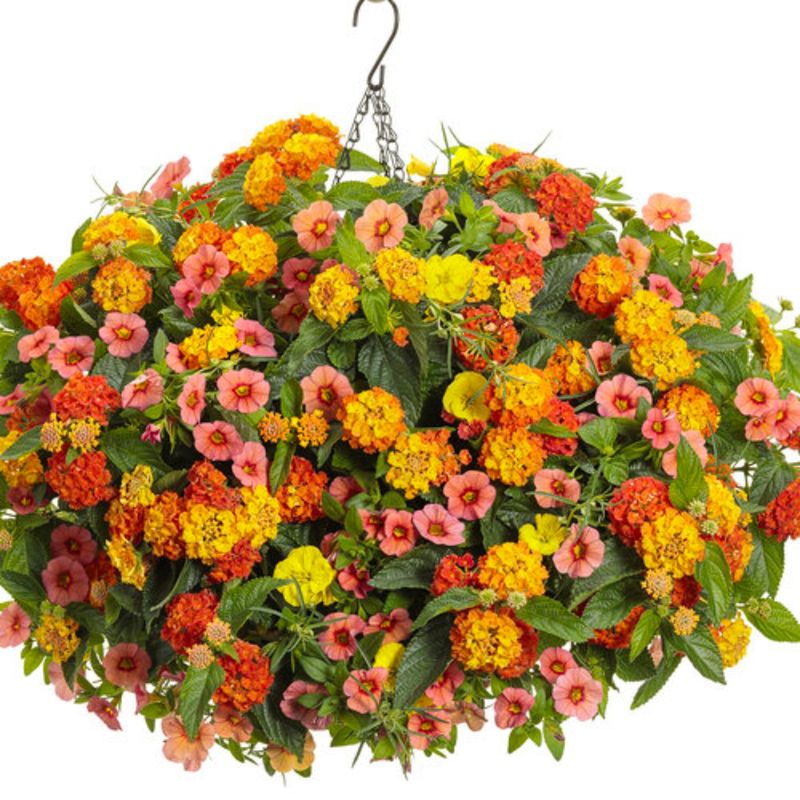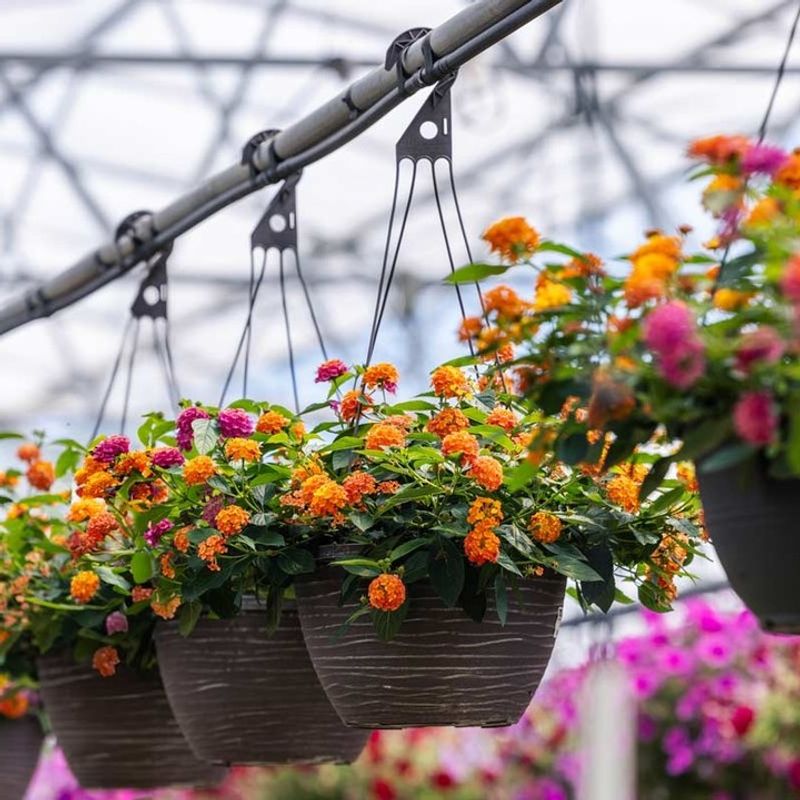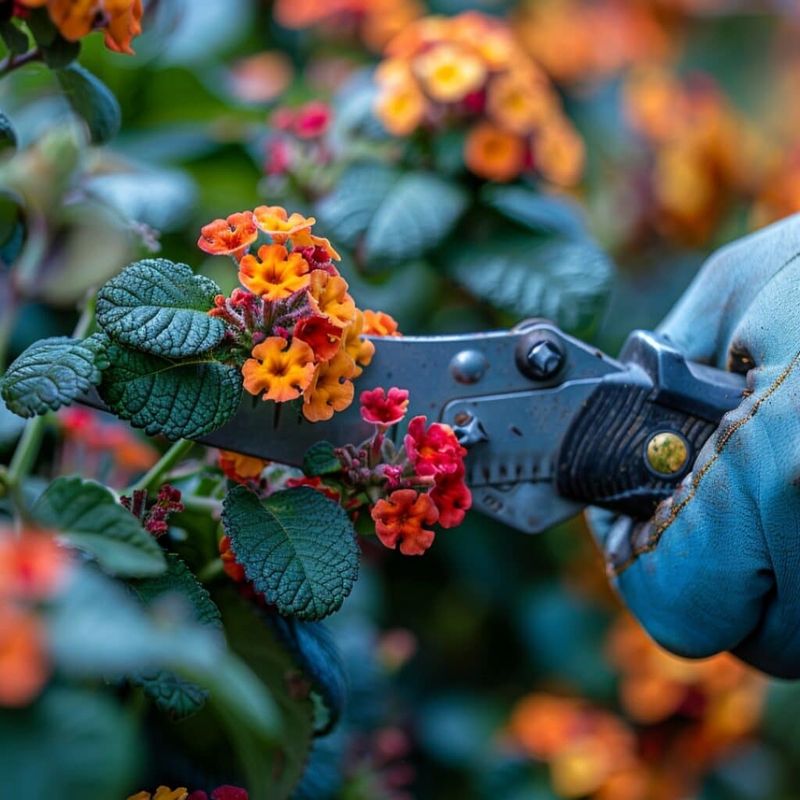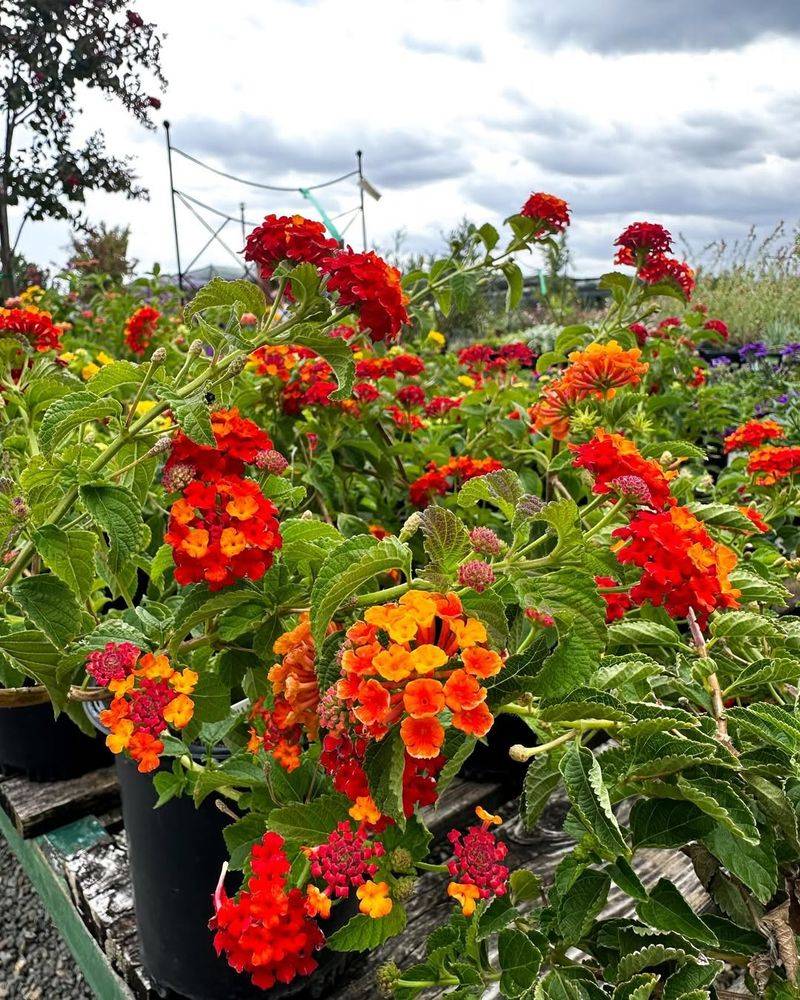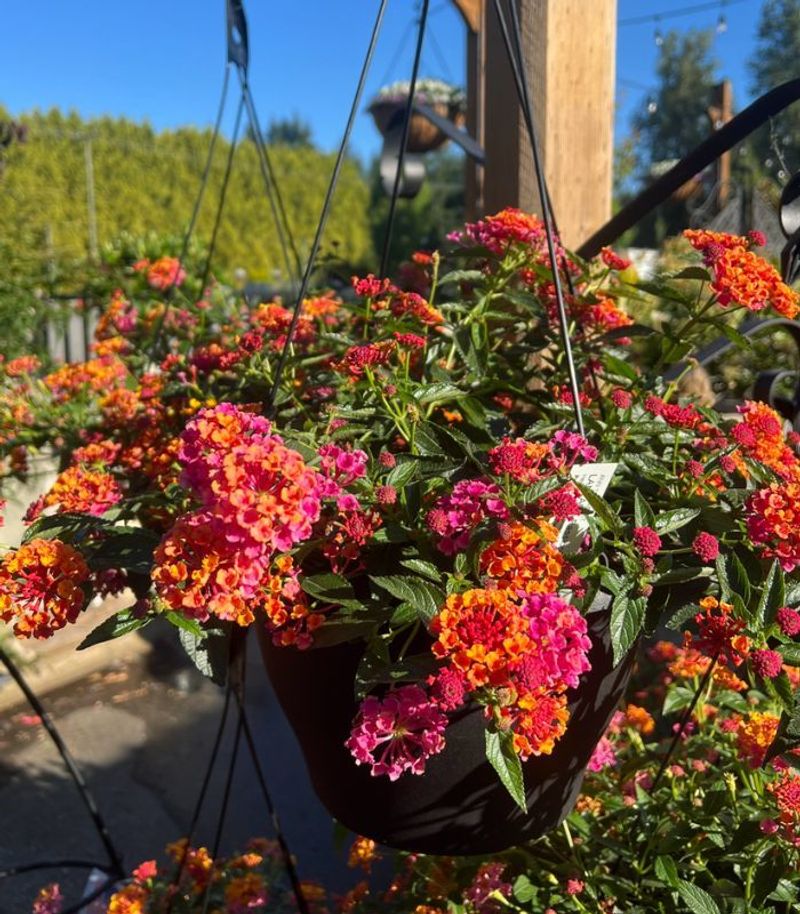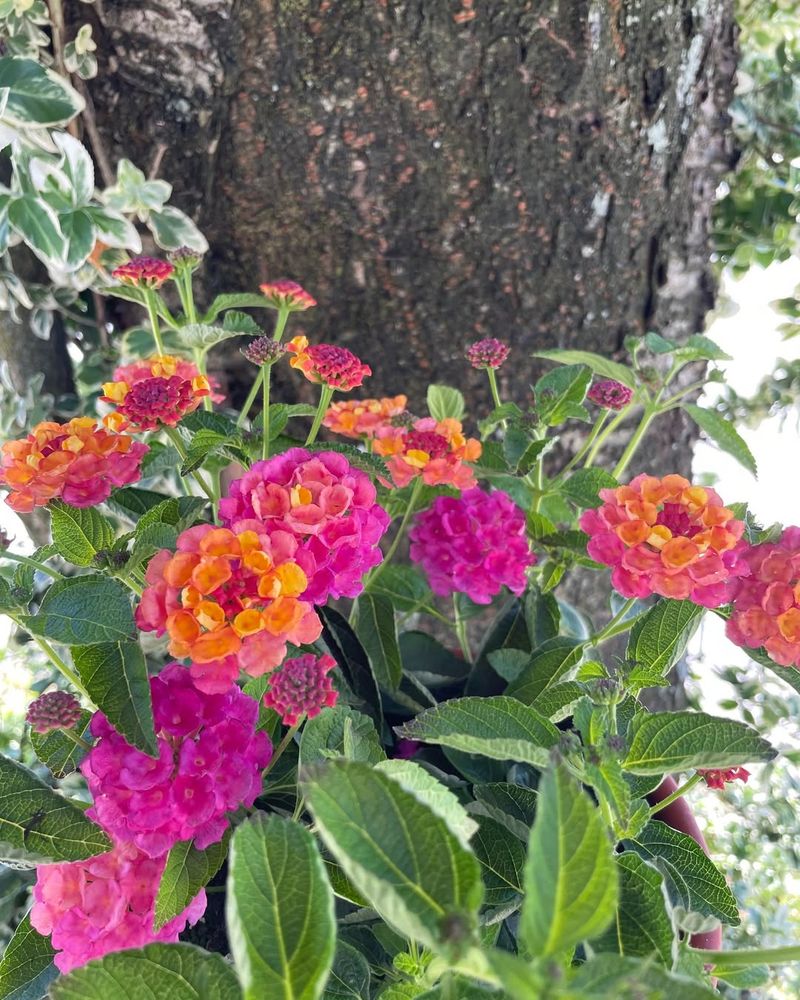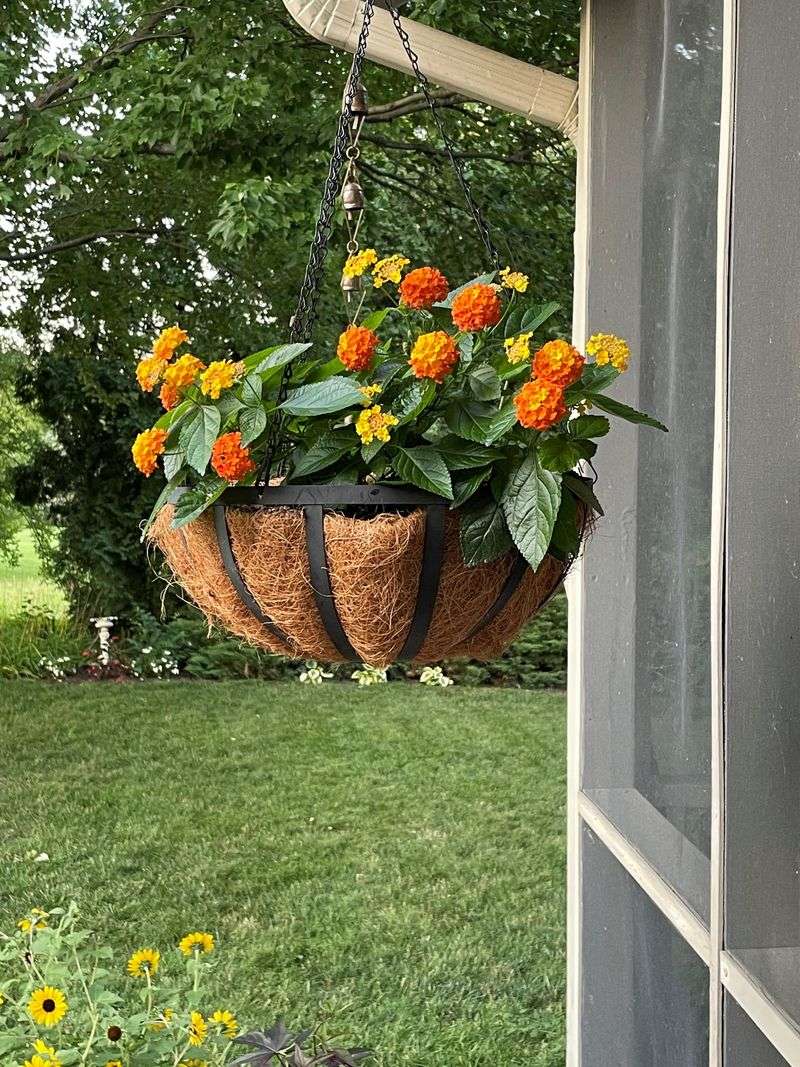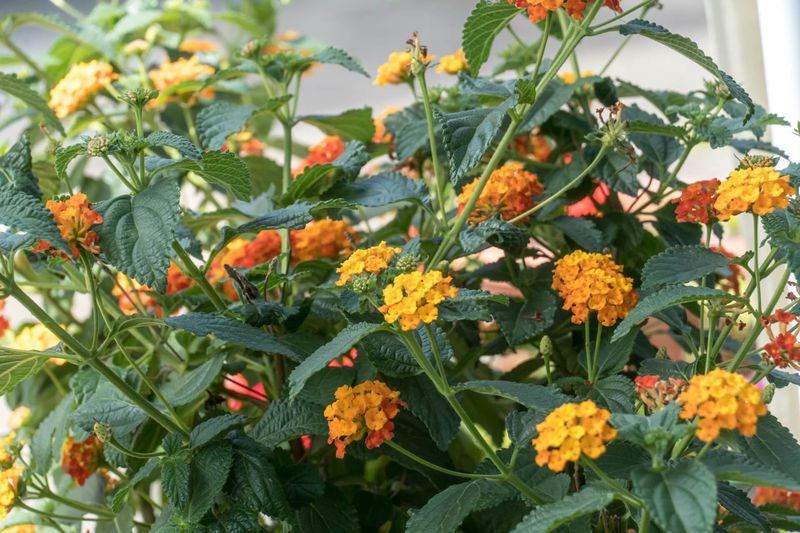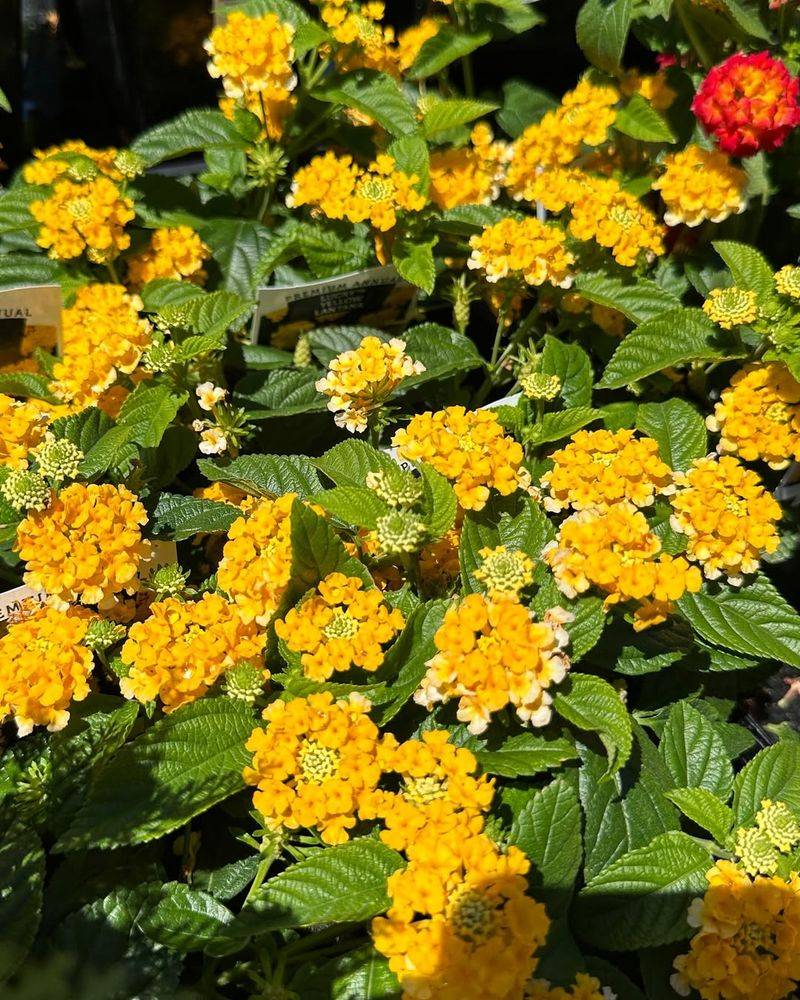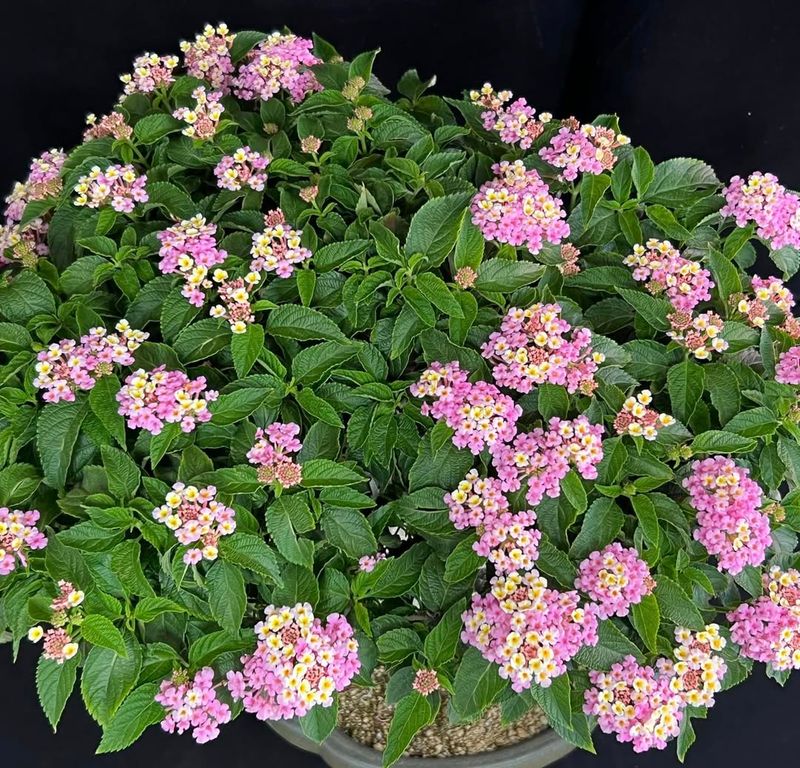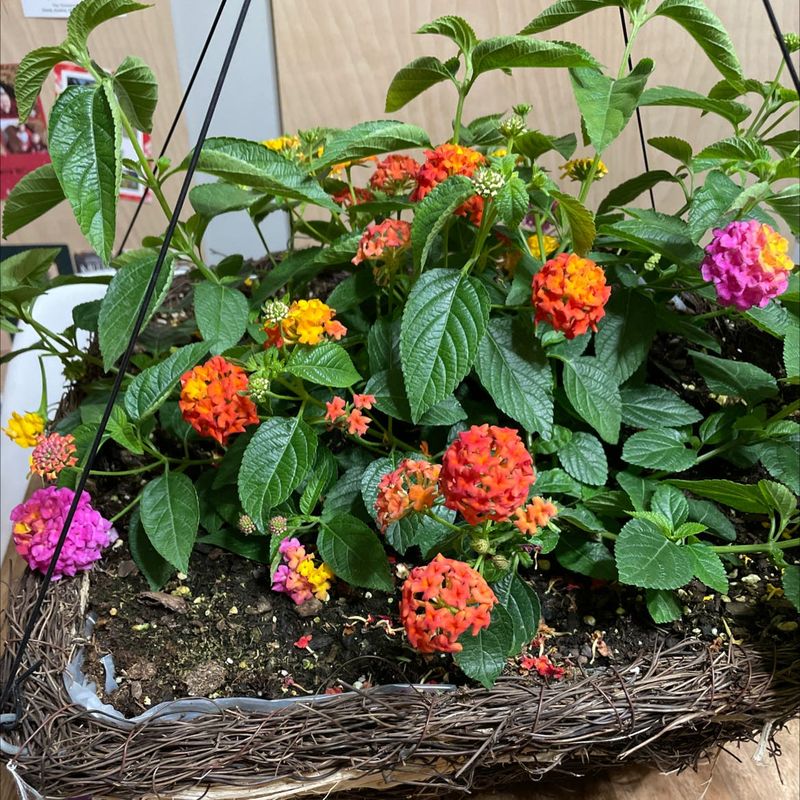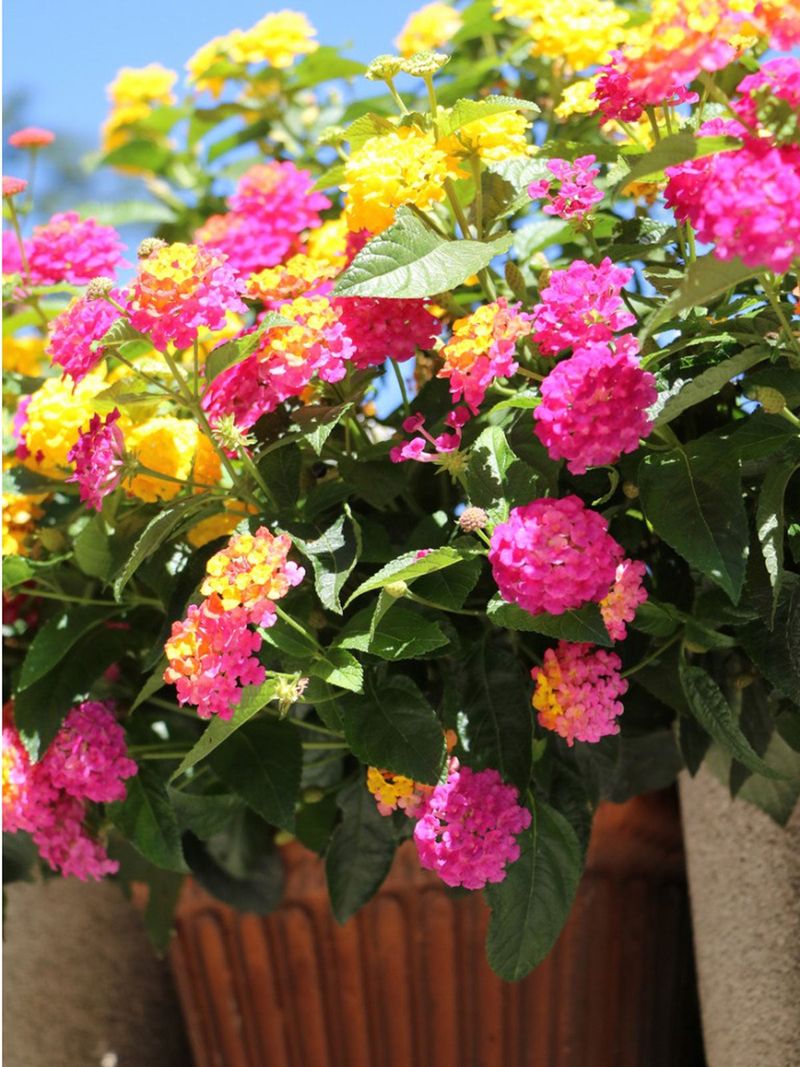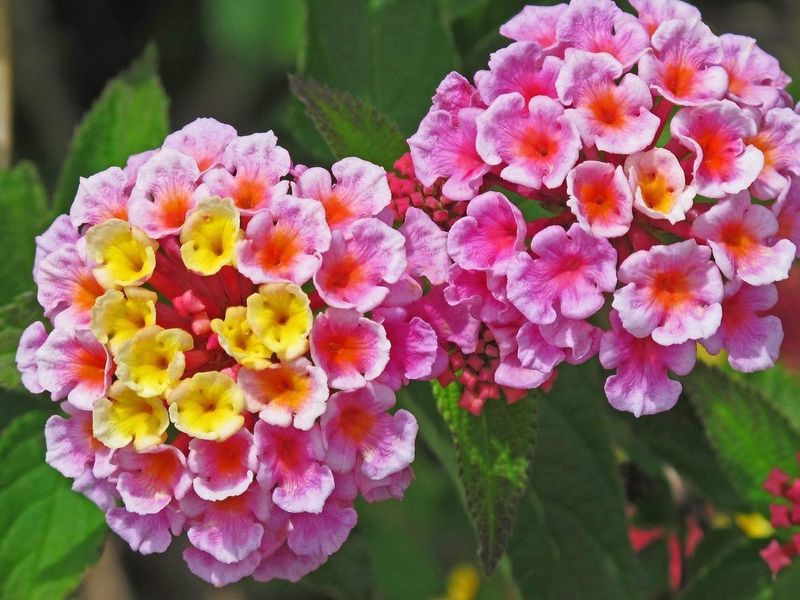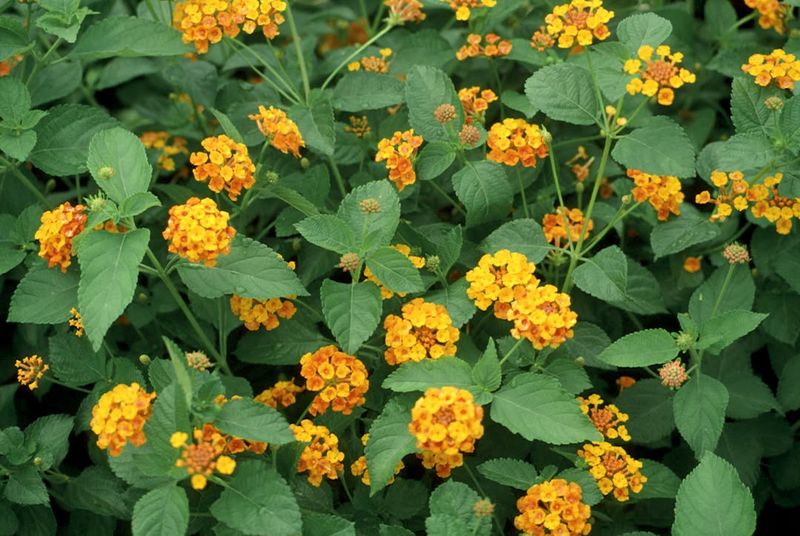Caring for trailing lantana in a hanging basket can be a rewarding experience. These vibrant plants are not only beautiful but also resilient to heat, making them a perfect choice for sunny spots. Discover how to keep your lantana thriving with these practical tips.
1. Choose the Right Basket
Selecting the right basket is the first step. Ensure it has ample drainage holes to prevent waterlogging. Hanging baskets come in various materials, like plastic or wire with coco liners.
Choose one that complements your home’s decor and suits the lantana’s needs. A well-ventilated basket allows roots to breathe, fostering healthy growth.
Proper size is crucial too; too small and the roots may become cramped, too large and the soil could stay moist for too long. Getting the right balance ensures your lantana flourishes in its new hanging home.
2. Pick a Sunny Spot
Lantanas love the sun, so finding a sunny spot is essential. They thrive in full sunlight, getting at least six hours daily. Placing your basket in a bright area ensures vibrant blooms.
Consider the sun’s path and avoid spots shaded by trees or structures. While lantanas are heat-tolerant, they still need some protection from scorching midday sun, especially in hotter climates.
A balance of morning and afternoon light works wonders, promoting healthy flowering while preventing sunburned leaves, keeping your lantana looking lush and colorful.
3. Water Wisely
Watering is key to caring for lantana. These plants prefer moist soil, but not soggy conditions. Allow the top inch of soil to dry before watering again.
Overwatering leads to root rot, so it’s better to err on the side of caution. Use a watering can with a narrow spout for even distribution. In hotter months, check more frequently as hanging baskets dry quicker than garden beds.
Early morning watering is best, minimizing evaporation and giving plants a fresh start. Proper hydration keeps lantana lush and prevents wilting.
4. Fertilize Regularly
Regular feeding keeps lantana blooming profusely. Use a balanced, slow-release fertilizer every 4-6 weeks to supply essential nutrients. Organic options are great, enhancing soil health over time.
Avoid nitrogen-heavy fertilizers, which encourage leafy growth over flowers. Diluted liquid fertilizers work well for hanging baskets, ensuring quick absorption by roots. During peak growing season, a little extra feeding can boost flower production.
Remember, healthy lantanas are not just about quantity but quality of blooms. Proper nutrition fosters vibrant, long-lasting displays.
5. Prune for Growth
Pruning helps maintain shape and encourages blooming. Regularly trim spent flowers to promote new buds. Cut back overgrown stems to keep the plant tidy and encourage bushier growth.
Pruning in early spring prepares lantana for a robust season. Remove any dead or diseased branches to prevent spread. A gentle trim won’t harm the plant, and many gardeners find it strengthens the plant’s overall structure.
It’s also a chance to shape the plant, giving it a neat and attractive appearance in its hanging basket.
6. Protect from Pests
Pests can sometimes trouble lantana. Keep an eye out for aphids, spider mites, or whiteflies. Regularly inspect leaves for signs of infestation, such as discoloration or small holes.
Natural remedies include neem oil or insecticidal soap. Encourage beneficial insects, like ladybugs, to control pests naturally. Keeping the plant healthy through proper care reduces vulnerability to pests.
If using chemical controls, follow instructions carefully to avoid harming beneficial insects. A vigilant approach ensures your lantana remains healthy and vibrant, free from pest damage.
7. Monitor Soil Quality
Healthy soil is crucial for lantana. Use a well-draining mix, rich in organic matter. Over time, soil can compact, reducing aeration and nutrient absorption.
Check soil regularly, ensuring it remains loose and fertile. Add compost or peat moss to enrich if needed. Soil’s pH should be slightly acidic to neutral, around 6.0 to 7.5. Test kits are affordable and easy to use. Good soil supports root health and boosts flowering.
Maintaining quality soil ensures lantana gets all the nutrients it needs to thrive in its hanging basket.
8. Control Temperature
While lantana is heat-tolerant, extreme temperatures can stress it. Ensure the plant isn’t exposed to temperatures below 50°F (10°C) for prolonged periods.
In colder climates, consider bringing baskets indoors during frosty nights. Conversely, protect from heatwaves by providing temporary shade or increasing watering. Monitoring local weather forecasts helps in planning protective measures.
Stable temperatures support continuous growth and flowering. Knowing how to manage temperature swings keeps your lantana healthy and flourishing, providing a colorful display throughout the seasons.
9. Understand Growth Patterns
Lantana has distinct growth patterns that influence care. It typically blooms from spring to fall, with a rest period in winter. Understanding these cycles helps in planning care routines.
During active growth, increase watering and feeding. As growth slows, reduce these to prevent root issues. Recognizing signs like reduced flowering or leaf drop can indicate a natural pause. Some gardeners trim back the plant before winter dormancy to stimulate spring growth.
This knowledge ensures your lantana’s needs are met year-round, fostering a strong and healthy plant.
10. Provide Air Circulation
Air circulation is vital for healthy lantana. Avoid overcrowded spaces, as stagnant air can foster fungal diseases. Position baskets with at least a foot of space around them to allow airflow.
Gentle breezes help strengthen stems and reduce humidity-related issues. If indoors, consider using a fan for circulation. Good airflow also aids in drying wet leaves and soil, preventing fungal growth.
It’s an often-overlooked aspect of care but crucial for keeping lantana thriving. Proper air circulation complements other care practices, ensuring a vibrant and healthy plant.
11. Manage Humidity Levels
Humidity affects lantana’s overall health. They prefer moderate levels, not too humid or dry. In arid environments, misting can help, but ensure leaves dry quickly to prevent disease.
Conversely, in extremely humid climates, increase airflow to reduce moisture buildup. Monitoring with a hygrometer provides accurate readings. Balancing humidity prevents stress, promoting lush foliage and vibrant blooms. It’s a delicate balance but manageable with regular checks.
Understanding your local climate’s impact on humidity helps tailor care practices, ensuring lantana remains resilient and beautiful.
12. Choose Companion Plants
Companion planting enhances your hanging basket’s appeal. Pair lantana with plants that have similar care needs, like verbena or petunias. This creates a harmonious display and ensures all plants thrive.
Consider color contrasts or complementary blooms for visual interest. Avoid companions that require significantly different watering or light conditions. Research and planning lead to a cohesive and flourishing basket.
Mixing textures, colors, and growth patterns can create dynamic and eye-catching arrangements that captivate and delight, making your hanging basket a focal point in any space.
13. Repot Periodically
Over time, lantana may outgrow its basket. Repotting refreshes the soil and provides room for growth. Signs it’s time include roots poking through drainage holes or reduced flowering.
Choose a slightly larger basket and fresh, well-draining soil. Gently loosen roots before transferring. Repotting is best done in spring when growth is most active. Handle plants carefully to minimize stress.
This rejuvenation process gives lantana a new lease of life, encouraging robust growth and abundant blooms. It’s an essential part of long-term care, ensuring your plant remains healthy and vibrant.
14. Prevent Disease
Disease prevention is crucial for lantana health. Keep leaves dry and remove any debris from the basket to reduce fungal growth. Regularly inspect plants for signs of disease, like spots or mildew.
Good air circulation and proper watering help prevent issues. If disease occurs, act quickly; prune affected areas and use appropriate treatments. Maintaining plant health through balanced nutrition and care reduces susceptibility.
Understanding common ailments and their early signs empowers gardeners to tackle problems before they escalate, keeping lantana vibrant and disease-free.
15. Use Mulch
Mulching helps retain moisture and suppress weeds. Use organic materials like shredded bark or coco coir, applying a thin layer around the base. This insulates roots and maintains soil temperature.
Mulch also breaks down over time, enriching the soil. Avoid piling it against the stems, which can lead to rot. It’s a simple yet effective practice that reduces maintenance while boosting plant health.
Mulching complements other care practices, ensuring your lantana receives consistent moisture and nutrient support, fostering a thriving and lush display in your hanging basket.
16. Embrace Seasonal Changes
Recognize the impact of seasons on lantana. As temperatures drop, reduce watering and feeding. Some gardeners trim lantana back in fall to prepare for winter dormancy, ensuring vigorous growth in spring.
During active seasons, increase care to support blooming. Acknowledging these cycles allows for tailored care, aligning with lantana’s natural rhythms. By adapting practices to seasonal changes, you ensure the plant remains healthy and vibrant year-round.
This approach not only keeps lantana thriving but also enhances its beauty and longevity, making it a standout in any garden display.
17. Celebrate Color Variations
Lantana offers a rainbow of colors, from pinks and yellows to reds and purples. Embracing these variations can enhance your hanging basket’s visual appeal.
Consider mixing different color blooms to create a dynamic display. The variety not only adds interest but also celebrates the plant’s natural diversity. Each color may attract different pollinators, like butterflies and bees, enriching your garden’s ecosystem.
This vibrant mix becomes a focal point, drawing admiration and delight. Enjoy the kaleidoscope of colors lantana brings, making it a cherished addition to any home garden.
18. Encourage Pollinators
Lantanas attract pollinators like butterflies and bees. Promote their visits by placing baskets in visible, accessible areas. Pollinators enhance the garden’s health and beauty, aiding in the plant’s reproduction and overall vitality.
Avoid pesticides that can harm these beneficial insects. Instead, focus on creating a welcoming environment, with diverse planting and water sources. Watching butterflies flutter around adds magic to any space.
Encouraging pollinators not only benefits lantana but also supports the broader garden ecosystem, creating a vibrant and lively atmosphere that’s enjoyable and fulfilling.


